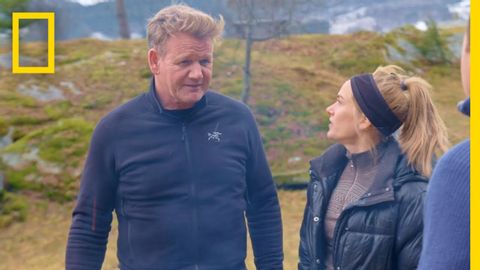
Subtitles & vocabulary
Traditional Norwegian Cuisine | Gordon Ramsay: Uncharted
00
林宜悉 posted on 2020/10/24Save
Video vocabulary
stretch
US /strɛtʃ/
・
UK /stretʃ/
- Verb (Transitive/Intransitive)
- To make your arm, leg muscles long to ease them
- To make something bigger by pulling on it
- Noun
- Making arm, leg muscles longer to ease them
- A consecutive row of things
A2TOEIC
More term
US /tɚm/
・
UK /tɜ:m/
- Noun (Countable/Uncountable)
- Conditions applying to an agreement, contract
- Length of time something is expected to happen
- Transitive Verb
- To call; give a name to
A1TOEIC
More develop
US /dɪˈvɛləp/
・
UK /dɪ'veləp/
- Verb (Transitive/Intransitive)
- To explain something in steps and in detail
- To create or think of something
A1TOEIC
More variety
US /vəˈraɪɪti/
・
UK /və'raɪətɪ/
- Noun
- Particular type of thing or person
- The quality or state of being different or diverse; the absence of uniformity, sameness, or monotony.
A2TOEIC
More Use Energy
Unlock All Vocabulary
Unlock pronunciation, explanations, and filters
